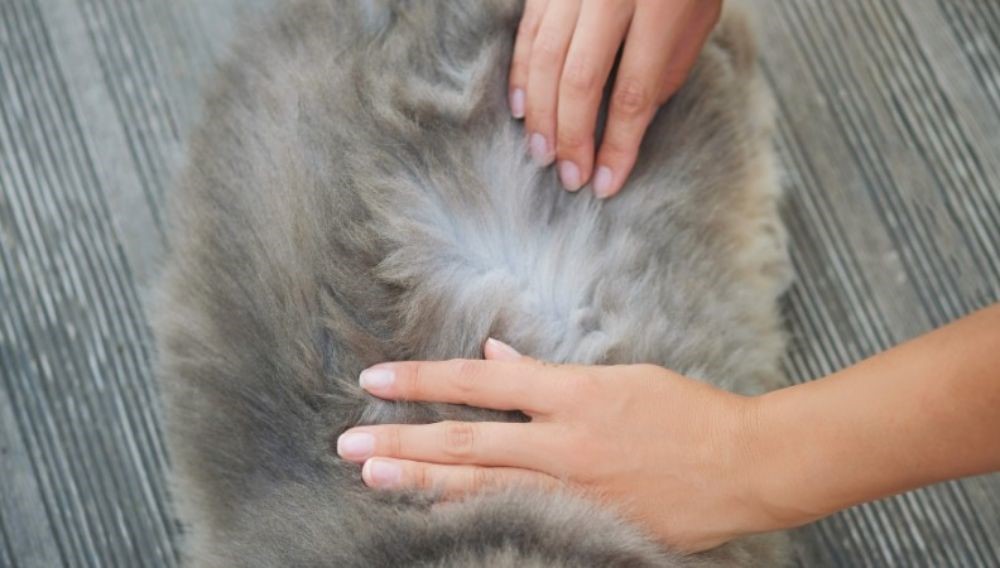
How Do You Tell If Your Cat Has Fleas?
Fleas are pests in every sense of the word. They make our skin and our pets’ skin itchy, and they can be rough and prolific if not treated properly. Fleas are tiny, blood-sucking parasites that, if left untreated, can make your cat uncomfortable and cause a variety of health problems.
If you spend a lot of time with your cat, you’ll know what’s normal and what’s not. Many flea-infested cats exhibit physical and behavioral changes that indicate something is wrong. In this article, we will discuss how to tell if your cat has fleas and how to address this common problem.
Can Cats Have Fleas Without Seeing Them?
Yes, cats can indeed be afflicted by fleas, although these pesky parasites may not always be immediately apparent. Fleas are minuscule insects, typically measuring just 1-2 millimeters in size, rendering them elusive to the naked eye, especially when your cat boasts a thick coat. Flea infestations typically encompass various life stages, including eggs, larvae, pupae, and adults. While adult fleas are the most conspicuous, flea eggs and larvae are considerably smaller and more challenging to identify. They have the knack for infiltrating your cat’s fur and skin, excelling in the art of concealment and rapid movement. It’s entirely plausible that you may fail to spot the fleas, even if they are present on your feline companion.
How to Check Your Cat for Fleas
Checking your cat for fleas is an essential part of pet care, especially if you suspect your cat may have been exposed to fleas or if they are exhibiting signs of flea infestation, such as excessive scratching or biting. Here’s how you can check your cat for fleas:
Prepare a Flea Comb
Hold the flea comb in one hand and place your other hand on your cat’s back to keep them steady. Starting at the head, gently comb through your cat’s fur, making sure to comb all the way down to the skin. Pay close attention to areas where fleas like to hide, such as the base of the tail, behind the ears, and under the armpits.
After each stroke, inspect the comb for fleas, flea eggs, or flea dirt (tiny black specks resembling ground pepper). Flea dirt is dried blood excrement left behind by fleas and will turn reddish-brown when moistened.
Look at the Skin Underneath Your Cat’s Fur
Part your cat’s fur with your fingers to see its skin. Be on the lookout for any parasites, signs of irritation, or lumps and bumps. If you find anything unusual, show it to a vet to be safe.
What Do Cat Fleas Look Like?
Cat fleas (Ctenocephalides felis) are tiny .They have a distinctive appearance that can be described as follows:
- Size: Adult cat fleas are quite small, measuring about 1 to 2 millimeters (1/16 to 1/8 inch) in length.
- Color: Cat fleas typically have a reddish-brown to dark brown or blackish coloration.
- Shape: Cat fleas have a laterally compressed body, which means they are flattened from side to side.
When examining your cat for fleas, you may not always see the adult fleas themselves, as they can move quickly and are good at hiding in the fur. Instead, you might notice the following signs of a flea infestation:
- Scratching: Cats infested with fleas will often scratch themselves excessively, especially around the neck, head, and base of the tail.
- Flea dirt: Flea droppings, also known as flea dirt, look like tiny black specks and can often be found in the fur or on the skin of infested animals. This is actually dried blood excreted by the fleas.
- Flea eggs: Flea eggs are very small and are usually white or translucent. They may be found in your cat’s fur, bedding, or around areas where your cat spends time.
Flea Treatment for Cats
Flea Medications: There are various flea treatment options available, including topical treatments, oral medications, collars, and shampoos. Consult your veterinarian to determine which option is best for your cat based on its age, weight, and overall health.
Consult a Veterinarian: Before starting any flea treatment, it’s essential to consult your veterinarian. They can recommend a safe and effective product based on your cat’s specific needs.
Active Ingredients in Flea Products:
Several active ingredients are commonly used in flea products for cats. Some of the most common ones include:
- Imidacloprid: Found in products like Advantage and Advantage II, it targets adult fleas.
- Fipronil (Puainta): Used in Frontline products, it kills adult fleas and ticks.
- Selamectin: Found in Revolution, it treats fleas, heartworms, ear mites, and other parasites.
- Spinosad: An ingredient in Comfortis and Trifexis, it kills adult fleas when ingested.
- Nitenpyram: Found in Capstar, it’s a short-term solution that quickly kills adult fleas but doesn’t provide long-lasting protection.
Conclusion
Detecting a flea infestation in your cat early is crucial for their well-being and comfort. If you suspect that your cat has fleas based on the signs mentioned above, it’s essential to take action promptly. Consult with your veterinarian for guidance on the best flea control methods, which may include topical treatments, oral medications, and environmental management.
Remember that flea prevention is often more manageable and cost-effective than treating a full-blown infestation. Regularly use flea prevention products recommended by your vet to keep these pesky parasites at bay and ensure your cat’s continued health and happiness.







